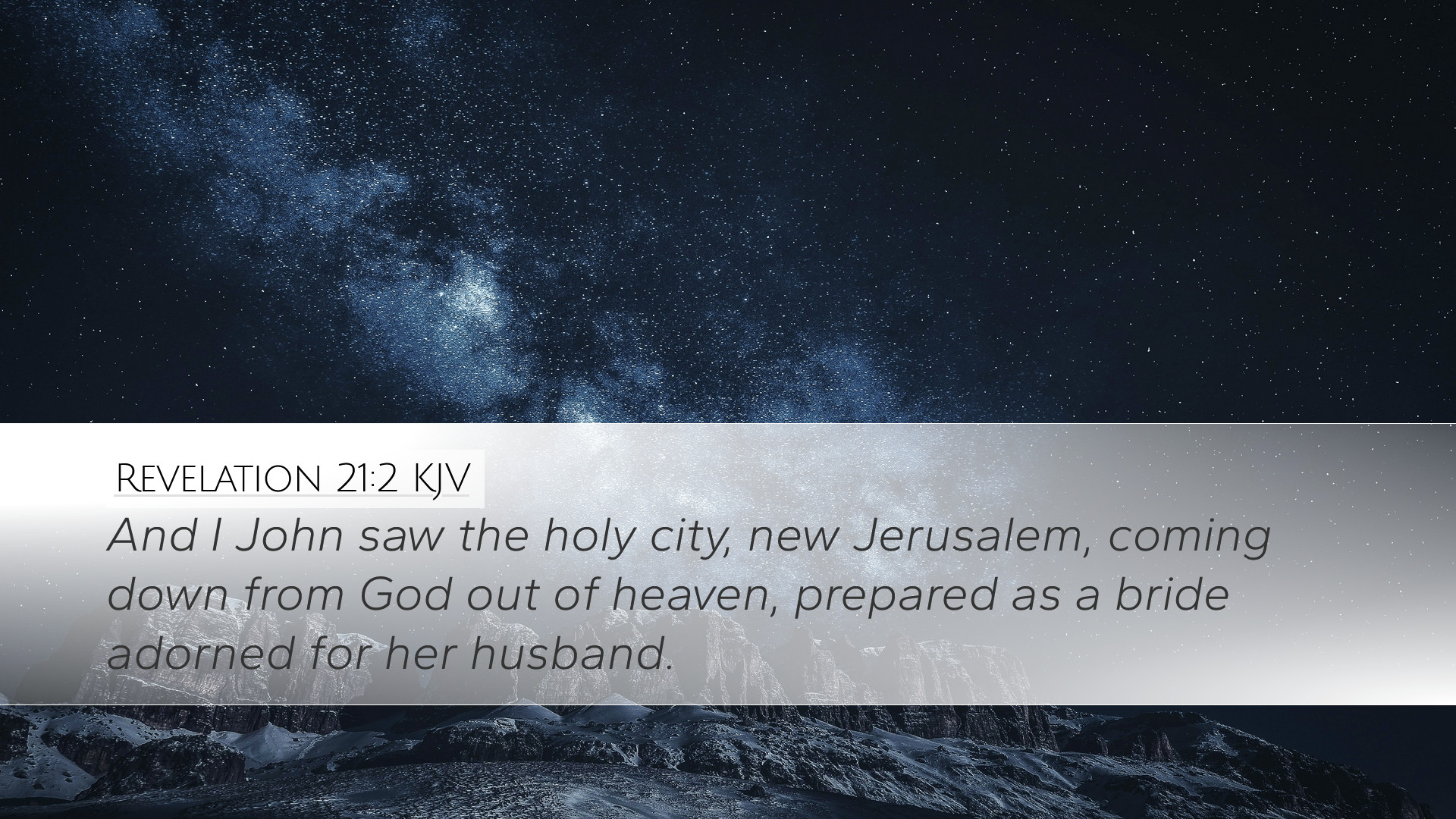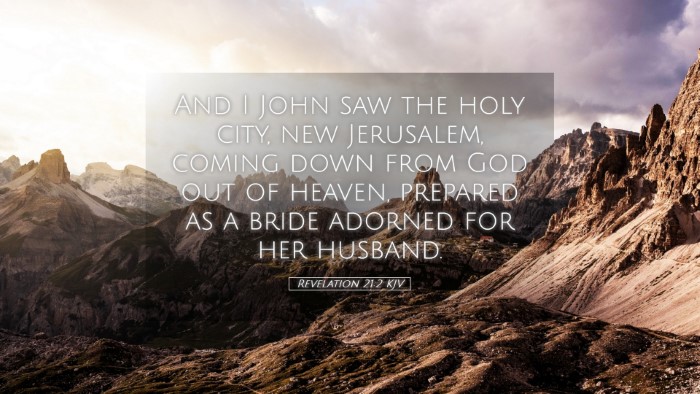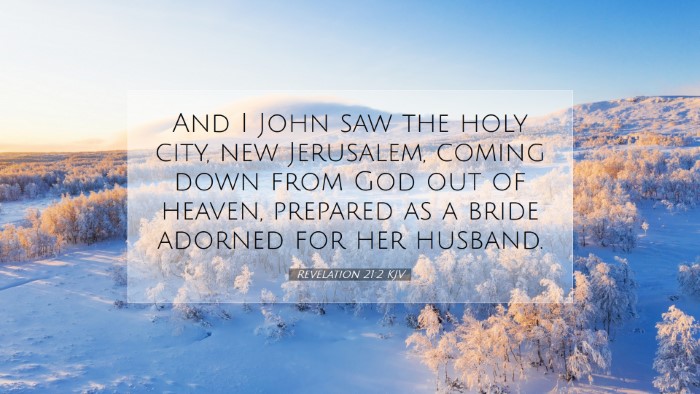Commentary on Revelation 21:2
Verse Reference: Revelation 21:2 - "And I John saw the holy city, new Jerusalem, coming down from God out of heaven, prepared as a bride adorned for her husband."
Introduction
This verse serves as a pivotal point in the apocalyptic vision which John describes. The imagery of a new Jerusalem descending from heaven signifies not only a physical place but encapsulates profound theological meaning regarding God's ultimate plan for humanity. The idea of the city as a bride adorned for her husband speaks to the intimate and celebratory relationship between God and His people.
Insights from Commentaries
Matthew Henry's Commentary
Matthew Henry emphasizes the glory and beauty of the new Jerusalem. He remarks on the transition from the old order of things to a new creation where the divine presence is intimately tied to the lives of believers. Henry notes that this city symbolizes heaven, where God's people will dwell eternally in His presence.
Moreover, he draws a parallel between the church and the bride, highlighting the purity and preparation that is necessary for this union. The metaphor of a bride speaks to the love and commitment within the relationship between Christ and the church, illustrating how believers have undergone a transformation to be ready for this divine union.
Albert Barnes' Commentary
Albert Barnes focuses on the “holy city” as a representation of the covenant community of God. He explains that this new Jerusalem is a fulfillment of God's promises throughout scripture. Barnes points out the significance of "coming down from God out of heaven," which indicates divine origin and ownership of this new creation.
He also elaborates on the concept of preparation. The term “prepared” suggests a deliberate act of God, affirming that the new Jerusalem is not merely a spontaneous creation but rather a meticulously crafted reality designed to reflect God's glory and holiness.
Adam Clarke's Commentary
Adam Clarke provides a detailed examination of the New Jerusalem, noting that the city represents the dwelling place of the redeemed. He stresses the phrase “as a bride adorned for her husband," underscoring the beauty, joy, and festivity inherent in entering into a covenant relationship.
Clarke expresses the anticipation that this new city brings to believers, signifying hope and a profound transformation in existence where God’s reign is fully realized. He encourages readers to view this imagery with an eye toward the eschatological promise of eternal life and communion with God.
Theological Implications
The vision of the new Jerusalem embodies several key theological themes:
- God's Faithfulness: The appearance of the new Jerusalem confirms God’s promises and faithfulness throughout biblical history.
- New Creation: This text heralds a new era where heaven and earth are reconciled, emphasizing the theme of restoration found within Revelation.
- Intimacy with God: The imagery of a bride and groom highlights the closeness intended in the relationship between God and His people, revealing His desire for an intimate covenant.
- Hope and Expectation: The promise of the new Jerusalem fills believers with hope, serving as a reminder that despite present sufferings, a glorious future awaits.
Application for Believers
This verse calls for reflection upon the nature of hope and expectation in the lives of believers. Understanding the new Jerusalem as a reality should inspire:
- Holiness: Just as the city is described as holy, believers are called to live in purity and dedication.
- Community: The mention of a collective city reinforces the importance of Christian community where mutual support and encouragement prevail.
- Readiness: The imagery of a bride prepares believers for the ultimate reunion with Christ, urging them to stay spiritually vigilant.
- Mission: Finally, recognizing the divine preparation of the new Jerusalem compels believers to engage actively in sharing the Gospel, preparing others for this promised future.
Conclusion
Revelation 21:2 encapsulates the central promise of hope and transformation inherent in Christian eschatology. Each commentary analyzed provides a rich tapestry of insights that encourage deeper study and reflection. The new Jerusalem represents not just a hope of the future but a reminder of God's everlasting faithfulness, the beauty of His design, and the joy of relational intimacy with Him. As pastors, students, theologians, and scholars engage with this profound verse, they are invited to partake in the expectation and responsibility of living in light of God's grand narrative.


